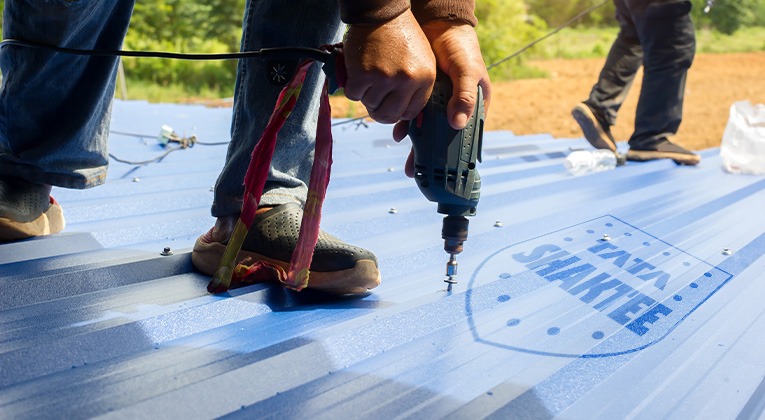Galvanized roofing sheets are an excellent choice for residential and commercial buildings. If you are considering an alternative roofing solution for your next construction, a GC sheet is a good option. Installing them is a durable and robust choice for keeping your structure safe from the elements.
So, how do you install a GC sheet in the first place? Let’s begin!
Roofing
Before the installation, a lot of inspections are required, including:
- Checking for flatness, slope and overhang of the frame on which the sheet will be laid. Since it’s impossible to correct the frame after installation, it’s better to thoroughly examine the frame first.
- Before the sheets are lifted onto the roof, they must be right-side up.
- As installation progresses, these are the factors to remember:
- Sheets are normally laid from left to right, in order of fixing. The first sheet is laid at the eaves to the purlin with a side lap of one-and-a-half corrugation.
- It is generally considered a good practice to apply fasteners alongside laps of sheets.
- To be safe, fasteners aren’t fixed less than 25mm from the end of the sheets. A maximum pitch between two fasteners must be 375mm.
- When laying the first GC sheet at the left of the eave-end, it must be located to other parts of the building such as the side wall and/or the end.
Sheet alignment should be checked at repeated intervals. The sheet is usually laid completely before the next or fixed sufficiently to ensure it can’t move.
For roof cladding, fastening screws through the crest of the sheets to the purlin ensures maximum water-tightness. Fixing the screws in the valley may make the roof susceptible to leakage.
Extra caution must be taken to ensure the sheets do not butt against one another. The gap between each mitred corner should be approximately 2mm. Mitring should always be done with a carpenter’s saw and the sheets should never be clipped.
Weatherproofing Roof Cladding
Wind can push water up under the ridge at the end of the roofing. To prevent this problem, valleys of the sheet are bent upward at the ridge-end. This process blocks the valley, thereby preventing water from entering. On the other hand, valleys at the eave-end are bent down in order to efficiently weatherproof the building. It’s also done to encourage smooth water flow into the gutters. Sheets can be bent into valleys with multi-grip pliers or sliding spanner.
From cow sheds to warehouses and homes, Tata Shaktee GC Sheet is your best choice for all projects!
